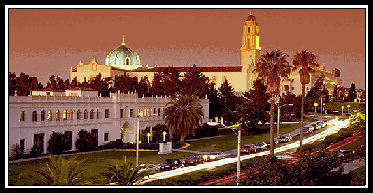
ENVIRONMENTAL AND NATURAL RESOURCE ECONOMICS
 |
| Fall 2019 |
 |
Economics 308 ENVIRONMENTAL AND NATURAL RESOURCE ECONOMICS |
|
|
|
| | HOME | SYLLABUS | CALENDAR | ASSIGNMENTS | ABOUT PROF. GIN | |
|
Study Guide III Chapter 9 1. Know how the relationship between harvest and sustainable yield affects the level of natural capital 2. Know how the relationship between waste and the absorptive capacity of the environment affects the level of natural capital 3. Know the difference between empty world and full world economics 4. Know the country that is best in terms of ecological footprint vs. carrying capacity and the country that is the worst 5. Know the impact type that has the biggest ecological footprint 6. Know the difference between strong sustainability and weak sustainability 7. Know the issues involved when using the ecological economics approach Recommended problem: None . Chapter 8 1. Show graphically how the optimal level of pollution is determined 2. Know the advantages and disadvantages of using emissions standards to deal with pollution 3. Know the advantages and disadvantages of using technology-based approaches to deal with pollution 4. Show graphically how Pigouvian (pollution) taxes can be used to get the optimal amount of pollution reduction 5. Know the advantages and disadvantages of using Pigouvian taxes to deal with pollution 6. Show graphically how tradeable pollution permits can be used to get the optimal amount of pollution 7. Know the advantages and disadvantages of using tradeable pollution permits to deal with pollution8. Show graphically the impact of pollutants with nonlinear or threshold effects, as well as the appropriate approach to policy 9. Know the difference between local and regional pollutants and the policy approaches that would work best in each case 10. Know the difference between uniformly mixed and nonuniformly mixed pollutants and the policy approaches that would work best in each case 11. Know the difference between cumulative or stock pollutants and flow pollutants 12. Show graphically the impact of cumulative or stock pollutants over time Recommended problem: Exercise . Chapter 12 1. Know which activities generate the most carbon dioxide 2. Know the two largest countries contributing to global carbon dioxide, both on a total basis and a per capita basis 3. Know two of the ecosystem impacts of climate change 4. Know two of the economic impacts of climate change 5. Know the positive impacts of climate change 6. Understand the issues of environmental and climate justice, including how to achieve a distributionally neutral carbon tax Recommended problems: None . Chapter 13 1. Know one adaptive measure to climate change in the following areas: water, agriculture, human health, energy 2. Know the advantages of using a carbon tax to deal with climate change 3. Show graphically how the price of a tradeable permit is determined 4. Show graphically how a tradeable permit allows firms to reduce carbon emissions in a cost-effective manner 5. Know the advantages of using tradeable permits (cap and trade) to deal with climate change 6. Know two of the other policies for dealing with climate change 7. Know the three broad categories of actions in terms of implementing climate stabilization wedges 8. Know the most effective policies to deal with climate change when costs are considered 9. Understand how capacity and responsibility are balanced when dealing with greenhouse development rights . Recommended problem: Excercise 2 . Chapter 14 1. Show graphically the environmental Kuznets curve and understand the reasoning behind it 2. Know the difference between the traditional view of the impact of environmental protection on the economy and the Porter hypothesis 3. Know the difference between relative decoupling and absolute decoupling, and be able to show that graphically 4. Know what the evidence is on whether environmental protection is too expensive, whether it leads to job losses, whether it reduces economy growth, and whether it harms international competitiveness 5. Know the policies that are involved in greening the economy Recommended problem: None . Chapter 15 1. Know the area of world that will grow most rapidly in population by 2100 and the one that will lose the most population 2. Understand how population age profiles can explain population momentum 3. Show graphically and explain the different stages of demographic transition 4. Know how the Cobb-Douglas production function can be used to determine what happens to per capita income as population grows 5. Know how a natural resource limitation affects the Cobb-Douglas production function 6. Know the negative economic impacts of population growth 7. Know how population growth negatively impacts the carrying capacity of the planet 8. Be able to calculate the ecological impact of population and affluence and how much technological improvement is needed to offset that 9. Know the policies that can help control population 10. Know the impact of population growth on urban areas Recommended problem: None . Chapter 22 1. Know the multiple dimensions that must be reconciled to achieve sustainable development 2. Know the implications of sustainable development on developed and developing countries 3. Know how environmental issues are dealt with in the different international economic institutions 4. Know the environmental goals that are part of the Sustainable Development Goals 5. Know the changes needed in agriculture to achieve sustainable development 6. Know the changes needed in industry to achieve sustainable development 7. Know the changes needed in energy to achieve sustainable development 8. Know the changes needed in fisheries and forests management to achieve sustainable development 9. Know the changes needed in water resources to achieve sustainable development 10. Understand how sustainable development might require a redefinition of development, including shifting from an exponential growth path to a logistic one 11. Know the policy proposals for achieving sustainable development Recommended problem: None . |